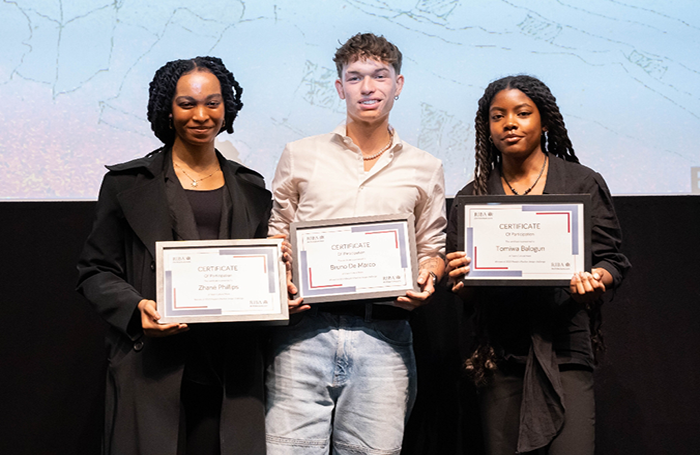What’s the most exciting project you’ve got coming up and why?
The Mayor of London wants to ensure that Crystal Palace National Sports Centre is fit for the future and the Greater London Authority (GLA) has assembled a team to deliver this objective. Beyond The Box is extremely excited to be working with Mott MacDonald, Hawkins Brown and the wider project team on the Crystal Palace National Sports Centre. They have designed a series of social value and community engagement workshops focused on engaging with marginalised communities who may otherwise not get the opportunity to engage with sports and cultural placemaking projects.
They have designed an inclusive engagement programme that seeks to centre the voices of diverse communities. The programme will also generate short term impact and immediate benefits to the local youth community. This will be through a programme of opportunities that connect aspiring young architects and sports leaders to training, skills development and employment outcomes whilst helping to improve design outcomes.
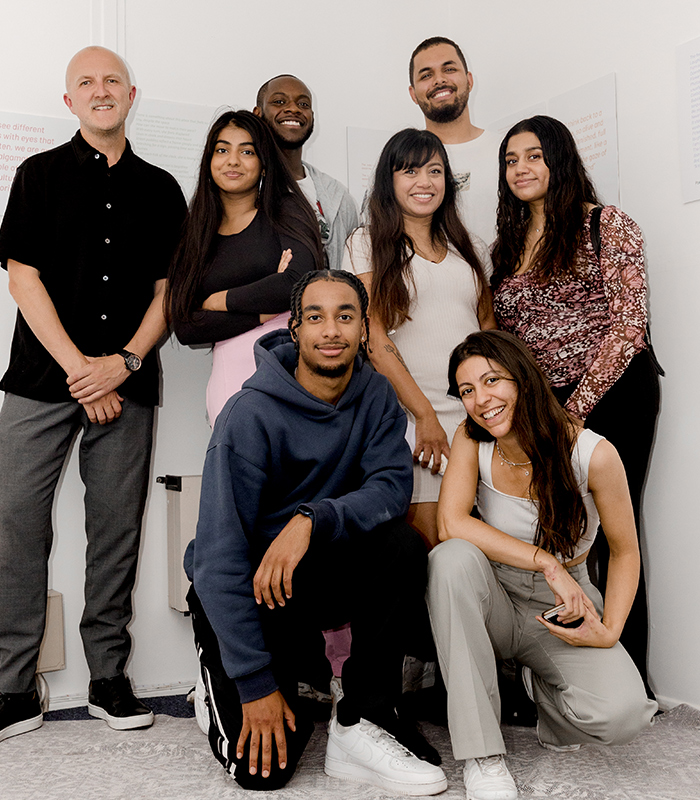
Why is it so important to use creativity as a vehicle for engagement in the built environment?
Arts and culture are central to urban planning and development both as tools for storytelling and engagement, but also as portals into understanding and celebrating the local identity of a place of its history and culture.
In order to create a society where everyone has the opportunity to shape the world, they have to apply the same creative thinking and innovation that artists and creatives have used for centuries. This will allow us to better understand the essence of a place and the people who inhabit it before you put pen to paper to start to design.
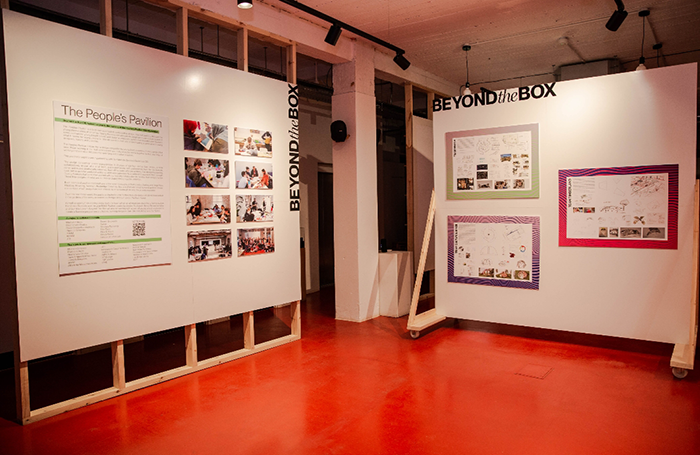
Where do you look for inspiration?
As a practice our inspiration often stems from the people and communities we collaborate with. We are fortunate to work with people and communities that represent the culture and diversity of London.
The communities we work with continually challenge us, our practice and our thinking. It results in us pushing boundaries and the design teams we work with to think differently. Working in this way can be challenging, but it is inspirational and ultimately rewarding.
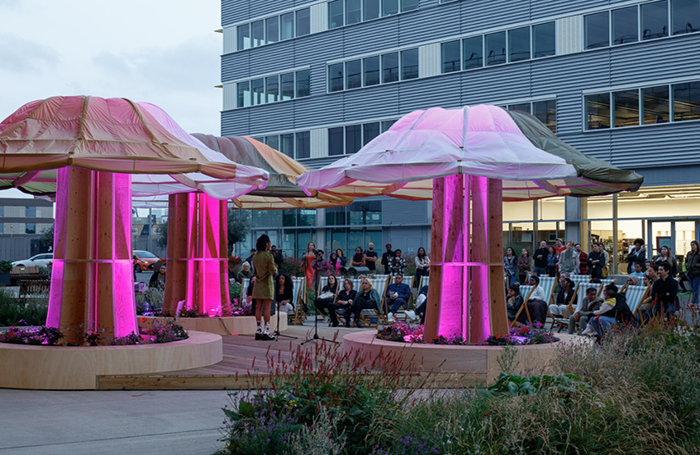
How do you think we can make architecture more accessible to people of all backgrounds?
Beyond The Box Founding Director, Neil Onions has worked in the equality, diversity and inclusion (EDI) space for almost 20 years. This involves working across the spectrum of diversity, including neurodiversity, looking after children, ex-offenders, rehabilitation centres, racial diversity charities and more. He says making architecture more accessible is no different to what is needed to make any other sector more accessible, it's about putting action to plans.
For us we see the power in action, providing opportunities for aspiring young architects to enter the sector and being an advocate as well as a critical friend to diverse led start-ups. This allows us to use our positioning to bang on the door (sometimes quite literally) championing for as many routes into the profession as possible to create an equal playing field.
Making architecture accessible is about both diversifying the profession in terms of who works as an architect and getting to progress within the profession, but also in terms of how and who engages with architecture at a community level. Lived experience should be considered within the design of spaces and should work in unison with design expertise.
So much investment and money is spent on diversity specialists (no such thing in my experience) on training and new frameworks and ideologies. The reality is for the past 30 years, all the reports and subsequent findings into racial inequality recommends the same actions. Such as pipeline development, retention of talent, progression into management roles etc but most large organisations haven’t implemented many of the recommendations. Smaller organisation often out stretch themselves to try and achieve all of them. Also, there is little to no accountability in what companies are doing to address the issue nor are there reporting requirements; much like setting global sustainability goals. So for us, it's about what action you can consciously take to make the profession more accessible.
Public procurement processes have lead to more architecture practices having to report on their diversity statistics and data. There are more and more requirements for larger practices to have representative supply chains which is fantastic, but those who are in the decision making positions both at policy level and decision making level don’t think about the wrap around services that are needed for smaller practices. This is what I feel needs to go a step further and if done correctly have a huge positive impact.
I believe we need to talk more about the practical things that are needed to make the profession more accessible. Many people who want to start their own practice as I did when I founded Beyond The Box, do so by holding down a full time job whilst getting the company off the ground as a side hustle.
For me, it's about making ourselves accessible and available often beyond 9am to 5pm. We invest time, energy, resource and money into emerging diverse led practices, always through the lens of collaboration. This isn’t about handouts as this is about equal access to opportunity. The talent and skills are abundant but are they nurtured?
We know where to target our support. Whether it's our work on the People’s Pavilion and our new Founders Programme or when delivering social value projects such as our work on Broadwater Farm. From supporting the development of creative start-ups, we know what is needed because we ask and we design around those needs.
Much of our work happens out of hours, late evenings and weekends. It's hard work as a micro business as it takes a lot of commitment but imagine a built environment profession where the larger practices directed their resources in the same way when it came to accessibility, diversity and inclusion. Imagine what that profession would look like and the impact that would have?
Our purpose drives us to champion equity over equality. This means we aim to meet every individual according to their needs. Our work is about freshness as it shifts perspective. It’s built to inspire and it takes effort and grit. But we do this with determination and always with humour and a smile. Everything we do is inspired by the people we support. We create an equal platform where everyone has the time and space to take part in whatever way they want to.
For me, inclusion is created by ensuring a series of principles which are in place. First, we must create the opportunity for participation and then ensure those who wish to participate have all they need to be able to access the opportunity. But it doesn't stop there. In order to build true equity, we must give agency and power to young people and communities in empowering them to have voice and influence.
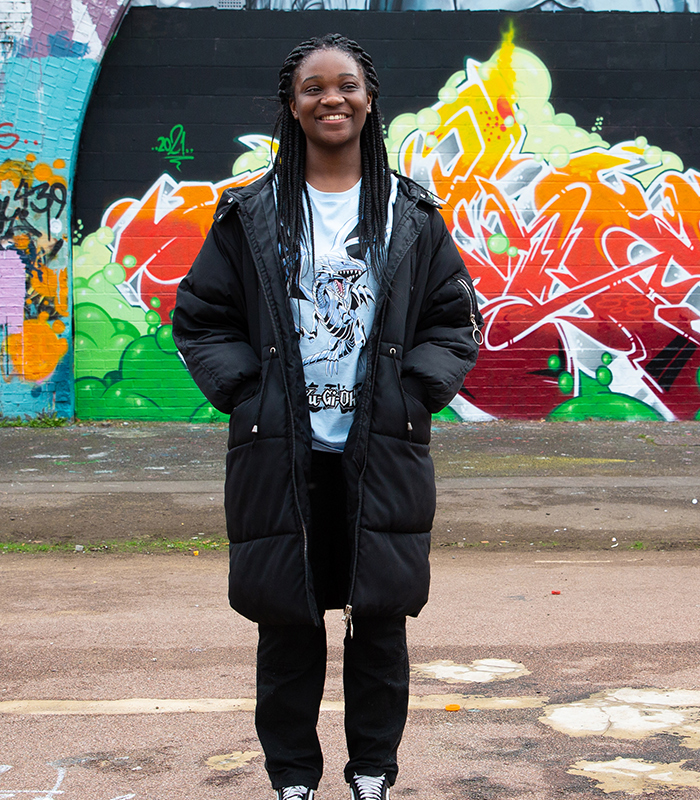
What do you think is the role of communities in a more sustainable architecture?
We can all recall buildings and spaces that have not worked, sometimes demolished after a few years of winning multiple awards and receiving acclaim. More often than not, it's due to how the space is used or not used by the communities they were designed to serve.
A large part of our work since our founding in 2018 has been in the social sustainability space, looking at social impact and social value as tools for community building. Working with local authorities and architectural design practices enables us to understand how social value can and should be linked to community engagement and EDI. This creates a holistic approach to working with communities through re-design, retro-fit and redevelopment projects.
Architecture isn't sustainable without communities - the business community in Canary Wharf for instance now has large swathes of underused office space due to people’s changing working habitats post pandemic. Customer based communities such as the Hackney Walk Designer District are designed in response to civil unrest without centring community needs and the heart of the decision making. It now sits empty and abandoned.
The possibilities within architecture to support the development of more sustainable communities is endless, but we must all actively champion work for more collaboration. I feel local authorities need to better understand the time and resource needed for genuine and collaborative design to take place and for developers to adapt their strategic plans to be more responsive to local needs. There needs to be time allocated to be able to work holistically so communities can shape the built environment and ultimately leading to a more sustainable future.
